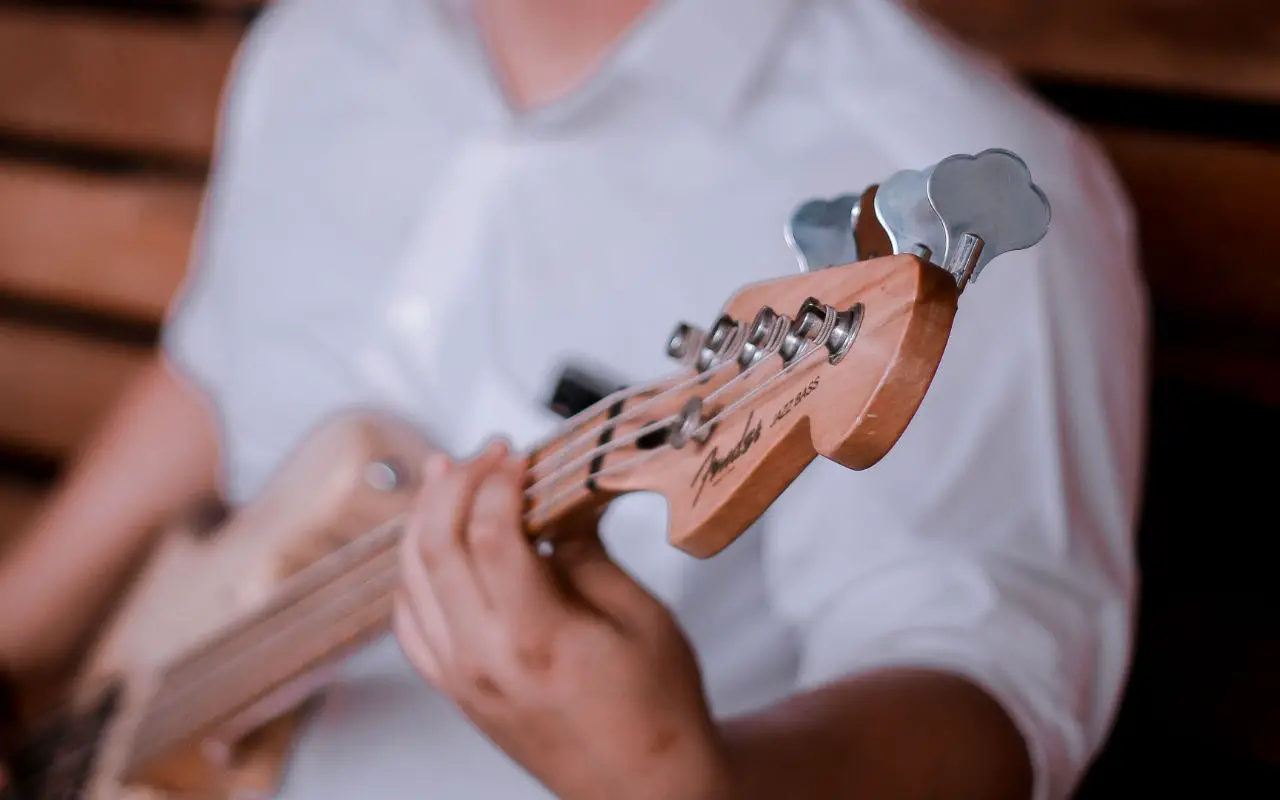In 1959 Leo Fender and his design team started work on a new bass. The Precision bass had been Fender’s only bass model since 1951. After Leo and his build team redesigned the P-Bass in 1957 the marketing department at Fender pushed Leo to introduce a new model to augment to the bass line.
The original prototype Jazz bass was conceived as a “deluxe model” to appeal to guitar players who wanted or needed to double on bass. The neck was markedly thinner than a Precision bass, only 1 ½” at the nut compared to the 1 ¾” of the Precision. The body featured an offset asymmetric design borrowed from the recently introduced Jazzmaster guitar (hence the name Jazz Bass).
Probably the most important feature though on the Jazz Bass were the two single coil pickups. With eight magnets on each pickup and two magnets per string the Jazz bass produced a brighter more focused sound than the Precision bass which uses a split coil hum-bucking design. The two pickup Jazz design also gave the bassist a much greater variety of tones to work with. The pickups were wired in reverse polarity to each other, so that when both are on full volume they cancel out the dreaded 60 cycle single-coil hum.
The body was alder with a maple neck and slab Brazilian rosewood fingerboard, which was later changed to a curved laminate board by 1964. The controls were stacked concentric knobs, volume on the top and tone controls on the bottom half, this was changed in mid 1962 to a simpler three knob design, that incorporated a master tone control. The offset body design provided more comfort while sitting and the thinner neck promoted faster and easier playing.
The Jazz bass was usually finished in the traditional Fender sunburst scheme, although customers could order custom colors for a 5% additional cost. Nitrocellulose lacquer was the standard finish on all Jazz basses until 1968 when Fender started finishing all it’s guitars and basses in polyurethane. You can still get the original lacquer finish on Fender’s Amercian reissue series.
Original Jazz bass models had a finger rest below the G string. The idea at the time was that most bass players would use their thumb to pluck the strings and therefor could rest their fingers on what Leo Fender called the “tug bar”. By mid 1973 Fender moved the finger rest to above the E string realizing that most bassists now use their fingers to play and could use it as a thumb rest. By 1982 Fender no longer installed thumb rests on it’s basses.
Another interesting design feature on the Jazz was the individual adjustable mute system used on the bridge as opposed to the simpler foam strip used on the Precision Bass, although this was also changed after just a couple years to the more basic single foam strip. By 1982 Fender and done away with all mute systems on it’s basses.
The Jazz Bass has a bright, rich sound with a scooped mid tone with both pickups on full. The neck pickup soloed sounds full and deep while the bridge pickup on alone gives a sharp nasally tone with a strong treble bark that cuts through well. Despite it’s name very few jazz musicians used the bass, however it became very popular with rock and funk bassists who liked it’s sweet, up-front tone that projected well both live and in a studio mix.
Big Changes
Starting around 1967 production Jazz Basses featured bound necks and blocked inlays, mother of pearl inlays on rosewood boards and black inlays on maple boards. In 1970 Fender decided to move the bridge pickup back about a ¼”. This small adjustment gave the bass a sharper more trebely sound that had a huge impact on many 70’s styles, especially funk and R&B. Why Fender may this change is still a mystery but many believe it was purely an aesthetic design decision.By 1982 Fender had moved the bridge pickup back it’s original placement on all standard Jazz basses, although you can still find the 70’s placement on reissue models.
Some notable J-Bass players were session ace Joe Osborn, John Paul Jones with Led Zeppelin, Jaco Pastorius, Geddy Lee with Rush, Marcus Miller, Larry Graham with Sly Stone, Noel Redding with Jimi Hendrix and Aston Barrett with Bob Marley.
The Jazz Bass has had a few design changes since 1960 but is essentially the same bass Leo Fender conceived over 50 years ago. It has been one of the most influential and copied instruments in modern music and even today is still extremely popular with a wide array of musicians.
Original vintage examples are highly sought after and can fetch over ten thousand dollars in today’s market. New custom shop models can be built for anyone looking for a modern high end Jazz with exact specifications. The Fender Jazz Bass is truly a legend that’s stood the test of time and will likely continue to be a favorite of bassists for generations to come.
